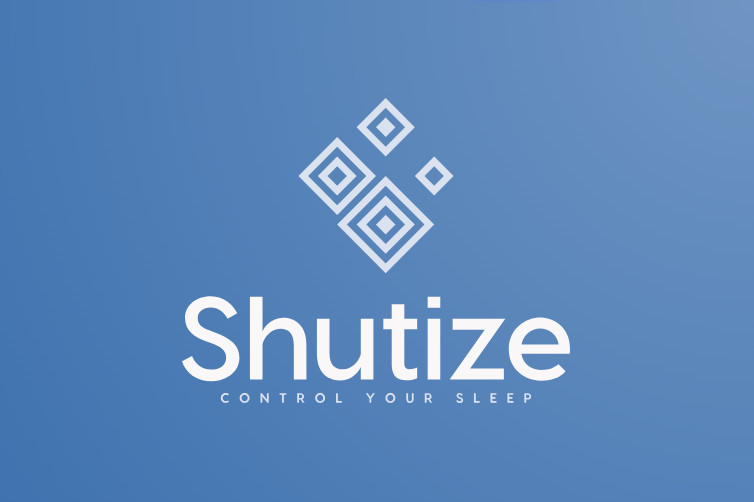views
Think you're just a “bad sleeper”? Struggle to stay awake during meetings or feel groggy no matter how many hours you sleep? It might be more than burnout or bad luck. It might be sleep apnea—and the only way to know for sure is with a sleep apnea test.
Millions of people have sleep apnea and don’t know it. That’s dangerous. Because left untreated, sleep apnea doesn’t just ruin your sleep—it silently puts stress on your heart, brain, and metabolism every single night.
Fortunately, finding out is easier than ever. A simple at-home sleep apnea test from Shutize could be your turning point.
Why Sleep Apnea Often Goes Undiagnosed
Sleep apnea is sneaky. Most people don’t realize they stop breathing while they sleep. They just feel tired all the time and chalk it up to life being hectic.
Common signs include:
-
Loud, chronic snoring
-
Waking up gasping or choking
-
Morning headaches
-
Daytime fatigue
-
Difficulty concentrating
-
Mood swings or depression
-
Poor memory
-
High blood pressure
But none of these symptoms scream “sleep disorder,” so people often ignore them—or worse, medicate the symptoms without treating the root cause.
That’s why a sleep apnea test is so important. It gives you the data to take action.
What Happens During a Sleep Apnea Test?
A sleep apnea test tracks your breathing, heart rate, and oxygen levels during sleep to see if your airway is getting blocked or collapsing.
There are two options:
In-Lab Sleep Study (Polysomnography)
This is the clinical route—lots of wires, electrodes, and a night in a hospital or sleep center. It’s detailed, but it’s expensive, inconvenient, and uncomfortable for many people.
At-Home Sleep Apnea Test
This is where Shutize steps in.
With Shutize, you take the test at home, in your own bed, using a small, non-intrusive device. It measures:
-
Breathing disruptions (apneas and hypopneas)
-
Oxygen desaturation
-
Pulse rate
-
Sleep movement
After one night of use, you mail it back. A licensed physician reviews your results and provides a diagnosis—usually within a few days.
Why the Shutize Sleep Apnea Test Is a Game-Changer
You don’t need a doctor’s appointment, a referral, or a hospital visit. The Shutize sleep apnea test is simple, affordable, and clinically accurate.
Here’s what makes it different:
-
Fast access: No waiting months for a sleep clinic slot
-
Home comfort: You sleep better in your own bed
-
Real results: Read by board-certified sleep doctors
-
Clear next steps: If diagnosed, treatment options are provided
Plus, it costs a fraction of what an in-lab study runs.
Who Should Take a Sleep Apnea Test?
If any of the following apply to you, it’s time to take a sleep apnea test:
-
You snore loudly or irregularly
-
You feel tired despite 7–9 hours of sleep
-
You wake up gasping or choking
-
You’ve been told you stop breathing in your sleep
-
You have high blood pressure, obesity, or type 2 diabetes
-
You’re always sleepy during the day, even after a full night’s rest
Sleep apnea doesn’t just affect older, overweight men. It can hit anyone—including women and children. Don’t assume you’re fine just because you don’t snore.
The Long-Term Risks of Untreated Sleep Apnea
This isn’t just about being tired.
When you stop breathing during sleep, your body jolts itself awake, over and over. That puts stress on your:
-
Heart – increases risk of heart attack, arrhythmia, and stroke
-
Brain – impairs memory, cognition, and mood
-
Metabolism – makes weight loss harder and increases diabetes risk
-
Immune system – weakens your defense against illness
Untreated sleep apnea is linked to early mortality. And yet, it’s entirely treatable. But only if you get tested.
What to Expect After the Test
If your test shows no signs of sleep apnea—great. That peace of mind is worth it.
If the results confirm sleep apnea, don’t panic. The next step is typically a treatment plan, often involving:
-
CPAP therapy – A small device that keeps your airway open at night
-
Lifestyle changes – Weight loss, side sleeping, limiting alcohol
-
Oral appliances – Custom dental devices to prevent airway collapse
With treatment, most people report:
-
More energy
-
Better sleep
-
Improved focus
-
Fewer mood swings
-
Reduced risk of serious health issues
The first step toward all that is the sleep apnea test.
Ready to Take the Test?
You’re not just testing for sleep apnea. You’re testing for peace of mind, better health, and a longer, stronger life.
You don’t need a clinic. You don’t need to wait. Just head to Shutize.com/sleep-apnea-test, request your test, and take it from there.
Sleep apnea can’t fix itself. But you can fix it—starting tonight.




Comments
0 comment